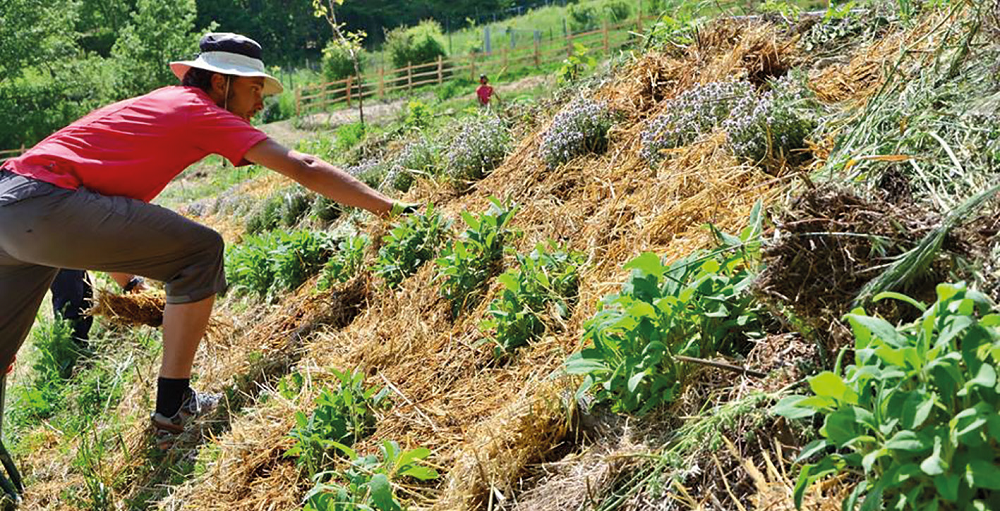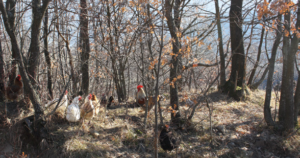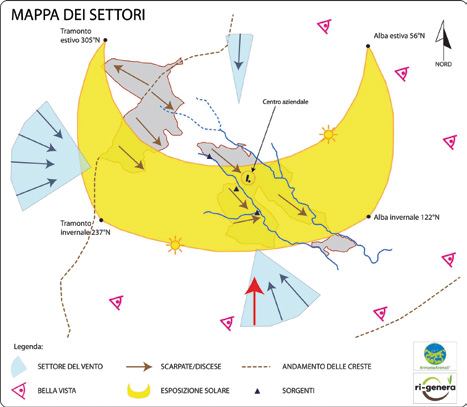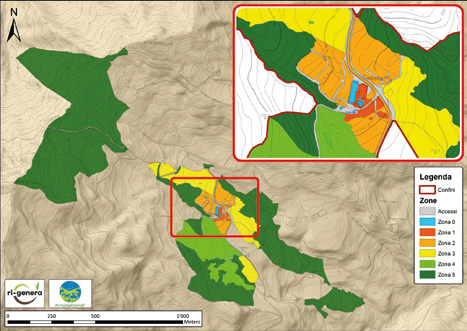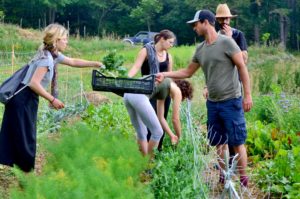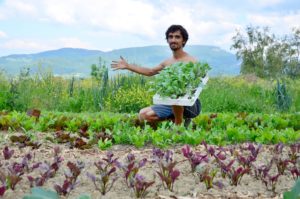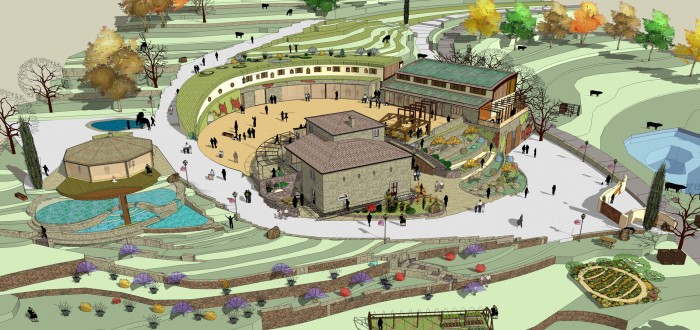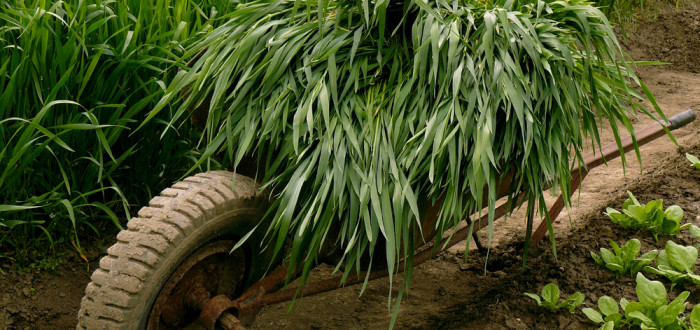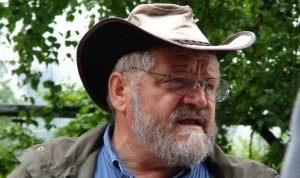Integrating and valuing margins
Relationship as key element in Permaculture design.
Permaculture was conceived as a design system that integrates harmoniously men and environment: home, food, natural resources, human and social relationships.
The aim is to design long-lasting settlements that mimic natural ecosystems by recognising and harmonising the different components of the landscape (morphology, climate, land, water, vegetation, animals) and developing relationships of mutual support among the elements in the environment and people’s needs.
Design and self-sufficiency
“Design thinking” and “self-sufficiency” become fundamental starting points, along with developing good observation skills, that are not limited to “see with the eyes”. Indeed, it’s necessary to analyse the landscape, understand its limits and resources and which are the interactions among the existing elements. As David Holmgren wrote: “Good design depends on a free and harmonious relationship between nature and people, in which careful observation and thoughtful interaction provide the design inspiration.”
In order to analyse the relationships among different elements when designing in Permculture it’s important to understand that everything is connected, each element in a system has more functions and every function can be carried out by different elements.
Let’s take hens, for example, and what they do in our farm:
- they provide us with manure that we employ in the vegetable gardens or in the orchard;
- they are free to scratch about and fertilise some areas of the farm, where they also keep the grass mown and eat pests;
- they provide us with eggs and meat;
- they are a great attraction for the guests at the agritourism.
At the same time, the functions they carry out could be partly done in another way, hence making the Farm more resilient. For example, compost is produced also by other animals of the Farm or by macerating woodchip or kitchen waste not suitable for animals.
The design principle of Zones and Sectors
Analysing zones and sectors of the landscape is a first step to create patterns that help optimising energy consumption by taking into account time and energy needed to take care of each element, the proximity of the different elements and the people who take care of them. We start by considering the landscape as a series of zones with the house or farm in the centre (“Zone 0”). The position of the elements in each zone will depend by the importance, priority and number of visits necessary for each element. An herb garden, for instance, would be placed next to the kitchen access, that is to say “Zone I”, the closest to the house. In “Zone II” we will place the most intensely cultivated and mulched vegetable gardens and some animals as hens and rabbits, while in “Zone III” other animals such as sheep, goats, pigs and trees or bushes. In “Zone IV” we could place, for example, a food forest or trees for wood production and finally “Zone V” with a non-cultivated part of trees and bushes that acts as wildlife corridor.
At La Fattoria dell’Autosufficienza we often made mistakes in zone management that we soon realised at our expenses. For example, our hens at the beginning were not close enough to the agritourism and they were in a very sunny location, so we had to protect them from the sun in summer, while it was difficult to visit them in winter, especially with snow. This position required a lot of time and energy that we could spend on other activities. Another mistake was planting a low-maintenance orchard very close to the agritourism. We soon realized that area could be much more convenient as an agricamping because easy to connect to the electric and sewer system, it’s close to the reception and it has a great view.
It’s become clear to us how every part of the Farm is connected and can either benefit or not from being close to the main building, the lake, the wood, etc. A careful arrangement of the space can save many expenses and energies. Having little time and energy to manage the whole surface of the Farm (700,000 square metres), our choice was to assign to “Zone V” more than 50% of the land, which is wood.
Sector analysis
The aim of sector design is also to direct external energy resources (wind, sun, fire and water) outside our system. It’s essential in order to determine the risks, but also to identify and design microclimates. We will place the different elements (buildings, particular species of plants, etc.) in a sunny or shady area according to their needs. The advantage is represented by the increase of energy efficiency and systems that need less work and maintenance. Finally, analysing sectors and creating microclimates allows us to cultivate a greater variety of plants and it improves the system biodiversity, also thanks to the so-called “edge effect”, that is to say a greater soil fertility and a richer fauna right where two microsystems meet.
The main adversity we had to face at La Fattoria dell’Autosufficienza is the strong wind coming from South. The climate here tends to be cold, so we try to create South-exposed warmer microclimates that at the same time result to be more exposed to the force of wind. This means that we must identify depressions and shelters provided by artificial walls or by the wood, that act as windbreak. So far, the most satisfying experiences have been the construction of drywalls and terraces that allow us to create very favourable microclimatic areas. In the coming months we will finally proceed with the construction of water basins that will allow us to create more margins, warmer microclimates and a great increase of beauty and biodiversity.
The ethical and human component
Permaculture has a very strong ethical component, embracing also human relationships and becoming fundamental for developing a culture of degrowth. Indeed, one of its principles is taking care of people (ourselves, relatives and community) and sharing equally (establishing consumption limits and redistributing surplus). The main purpose of Permaculture is to allow individuals, families and local communities to increase their self-sufficiency and self-regulation, reducing the total environmental impact, transforming society and reorganising the production-consumption cycle. At La Fattoria dell’Autosufficienza we constantly host courses on self-sufficiency and we give many people the chance to volunteer and learn more about self-production techniques and how to reduce consumptions.
Newsletter
ARGOMENTI
- Activities (8)
- Attività (10)
- Attrattive (16)
- Cosa fare (22)
- Farm products (4)
- Fattoria dell'autosufficienza (62)
- Fattoria dell'autosufficienza (40)
- Fauna (8)
- Flora (5)
- I nostri modelli (15)
- Istruzioni per viaggiare (2)
- News (63)
- News (97)
- Our models (14)
- Permacultura (30)
- Permaculture (23)
- Prodotti della fattoria (4)
- Senza categoria (2)
- Senza categoria (4)
- Things to do (22)
- Tourist attractions (15)
